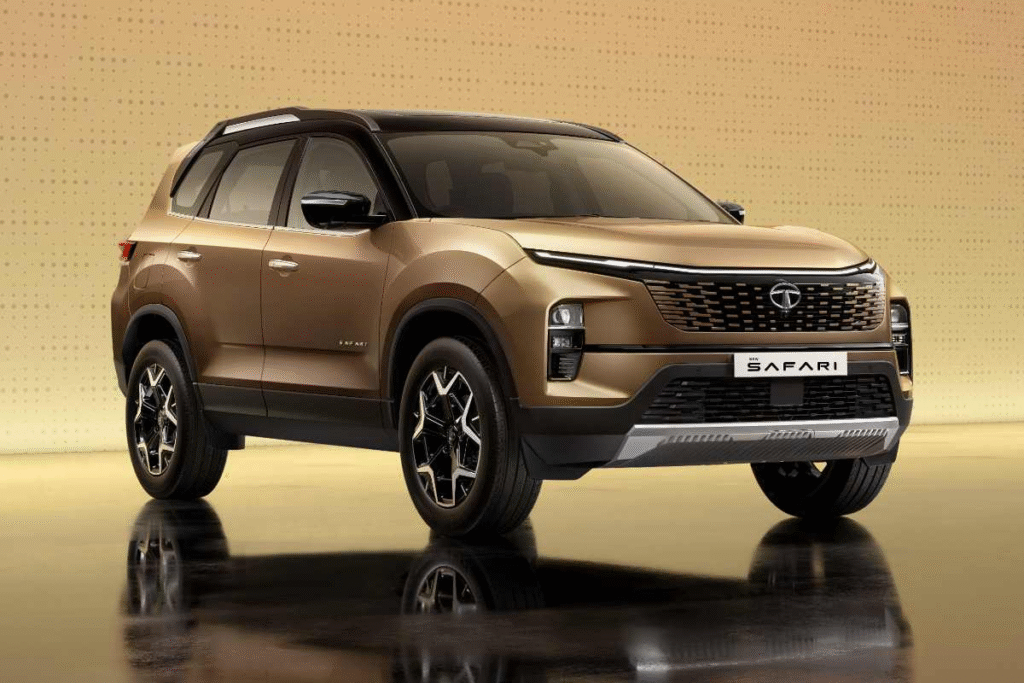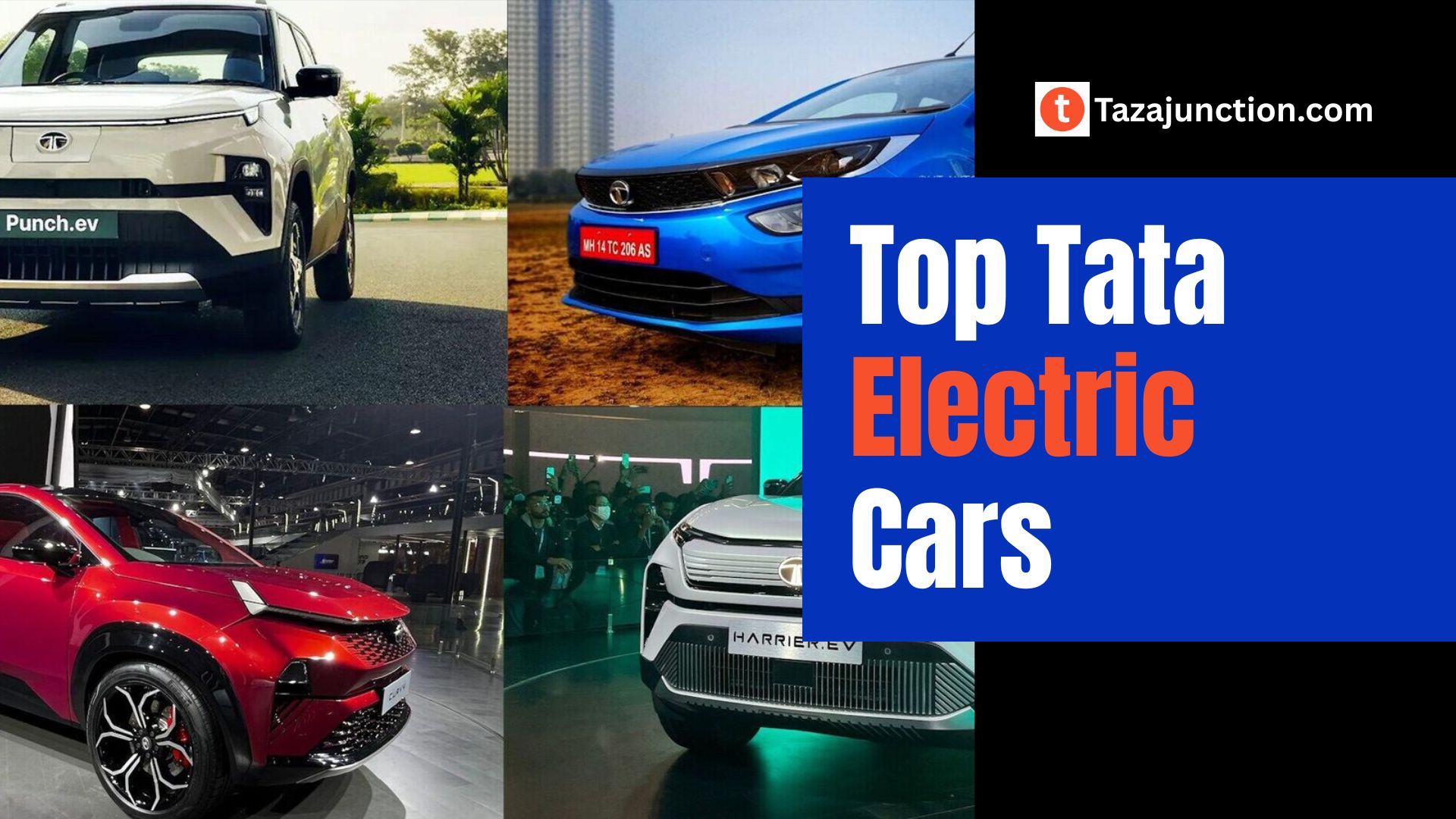As the world pivots toward a greener future, India’s automotive sector is undergoing a transformation like never before. At the forefront of this shift is Tata Motors, a brand that has not only embraced electrification but is redefining the standards for sustainable mobility in India.
By 2025, Tata Motors has firmly positioned itself as a leader in the Tata electric cars (EV) segment with a versatile portfolio that includes the Tata Harrier EV, Safari EV, Sierra EV, and Altroz EV.
This article delves into these four key Tata electric cars models and explores how Tata Motors is shaping the future of electric mobility in India and beyond.
Now you can also compare Yamaha electric cycle to Jio electric cycle. Read our article on it, you can get more info about it.
Table of Contents
1. Tata Harrier EV – The Electric SUV with a Bold Presence

The Tata Harrier EV is one of the most anticipated launches of 2025. Building on the success of its internal combustion engine (ICE) predecessor, the Harrier EV brings the same muscular design, rugged character, and road presence—now enhanced with a clean electric drivetrain.
Design and Platform
The Harrier EV retains the OMEGA architecture, derived from Land Rover’s D8 platform, but is now adapted for electrification. It features Tata’s Gen 2 EV architecture, which allows for a larger battery pack and supports dual-motor all-wheel drive capabilities.
Aesthetically, the EV version introduces subtle changes to differentiate it from the ICE model—sleek LED lighting, a closed-off grille for improved aerodynamics, and exclusive EV-themed blue accents. The modern design reflects Tata’s futuristic vision without straying from the Harrier’s bold identity.
Performance and Range
The Harrier EV is expected to come with a battery pack between 60-70 kWh, offering a range of 400–500 km on a single charge. Dual motors enable it to tackle various terrains with ease, appealing to adventure-loving urban drivers.
Features
Inside, it boasts a panoramic sunroof, a 12.3-inch touchscreen infotainment system, connected car features, wireless charging, ventilated seats, and a 360-degree camera. Safety features include ADAS (Advanced Driver Assistance Systems), which makes the Harrier EV not just eco-friendly but also smarter and safer.
You can also take a deep dive into the Toyota Fortuner 2025—covering its design, engine options, features, performance, safety, pricing, and more
2. Tata Safari EV – Luxury and Sustainability Rolled into One

The Tata Safari EV takes everything people love about the iconic Safari—its spaciousness, commanding driving position, and road dominance—and adds the silent strength of an electric drivetrain.
Design Evolution
While the ICE Safari received a facelift in late 2023, the 2025 Tata electric carsTata electric cars version pushes the design envelope further. The EV version maintains the three-row configuration while adopting sleeker body lines, digital DRLs, a futuristic front fascia, and larger alloy wheels. The rear has a more sculpted look, and the vehicle features a new EV badge denoting its electric identity.
Interior and Comfort
The cabin focuses on a premium, tech-rich experience. Plush materials, powered front seats with memory function, and customizable ambient lighting add to the luxury feel. It also features Tata’s new software interface, which offers over-the-air (OTA) updates and integrates with Tata’s connected vehicle ecosystem.
Powertrain and Range
Under the hood, the Safari EV uses the same Gen 2 EV platform as the Harrier EV but may feature a slightly higher battery capacity to support its larger size. Range estimates fall between 450–520 km, making it a top contender for long family trips.
Target Market
This Tata electric cars model is perfect for large families or professionals seeking a premium, sustainable SUV that makes no compromise on space or road presence.
3. Tata Sierra EV – The Revival of a Legend

The return of the Tata Sierra, one of India’s most beloved SUVs from the 1990s, has sparked immense excitement. But this time, it’s back as an all-electric, futuristic SUV that pays homage to its heritage while paving the way for the future.
Design Language
The Sierra EV’s concept first wowed audiences at Auto Expo 2020, and the 2025 production model remains true to that vision. It retains the iconic wraparound rear glass panels—a design signature of the original Sierra—but modernized with LED lighting, a minimalist closed grille, and sculpted body lines.
Built on Tata’s Born Electric platform, the Sierra EV is not just an electrified version of an existing car—it’s designed from the ground up as an EV. This means optimized space utilization, a flat floor, and enhanced battery integration.
Performance and Specifications
Expected to come in both single and dual-motor variants, the Sierra EV will cater to a wide spectrum of buyers. The vehicle is expected to offer up to 500 km range, supported by fast-charging capabilities.
Interior and Experience
Inside, the Sierra EV is designed to feel like a “living room on wheels.” Spacious rear seating, a panoramic sunroof, rotating front passenger seat (as seen in concept), and minimalistic dashboard offer a unique combination of comfort and innovation. The infotainment system integrates AI-based personalization, making every drive seamless.
Legacy Meets Future
The Sierra EV is more than a car—it’s a nostalgic revival for older generations and an exciting discovery for the youth, making it a unique cultural and automotive milestone for Tata Motors.
4. Tata Altroz EV – Practical Hatchback with Green Tech

The Tata Altroz EV represents Tata’s commitment to making EVs accessible and practical for Indian consumers. Based on the company’s proven ALFA (Agile Light Flexible Advanced) architecture, the Altroz EV combines the everyday practicality of a premium hatchback with the benefits of clean energy.
Design and Exterior
The design of the Altroz EV mirrors that of the ICE version but adds EV-specific elements such as a redesigned grille, EV badges, blue accents, and aerodynamic wheels. Its sharp, angular lines give it a sporty yet premium appeal.
Battery and Range
The Altroz EV is expected to come with a 30–40 kWh battery, offering a range of 300–350 km, ideal for daily urban and suburban commutes. It supports both AC and DC fast charging, allowing up to 80% charge in just under an hour.
Features and Tech
Despite being an entry-level Tata electric cars, the Altroz EV doesn’t skimp on features. It includes a 10.25-inch touchscreen, digital instrument cluster, connected car features, voice commands, and cruise control. Tata’s Ziptron technology ensures reliability, performance, and safety.
Target Audience
Perfect for young professionals, college students, and urban dwellers, the Altroz EV is designed for those who want an affordable yet premium green mobility solution without compromising on design and features.
Tata’s EV Ecosystem and Strategy
Tata Motors is not just launching Tata electric cars—it’s building a complete EV ecosystem. With its Ziptron technology, Tata ensures all its EVs meet high standards of safety, performance, and longevity.
The company also collaborates with Tata Power to expand the EV charging infrastructure across India, making EV adoption more practical.
Additionally, Tata’s investment in Jaguar Land Rover’s EV ambitions, battery supply chains, and dedicated EV platforms shows that the brand is not taking a backseat in the global EV revolution.
Conclusion
In 2025, Tata Motors stands at a pivotal point in India’s automotive history. With the Harrier EV, Safari EV, Sierra EV, and Altroz EV, the company is offering something for everyone—from premium SUV buyers to young hatchback owners—all while staying true to its mission of sustainable innovation.
By combining advanced technology, compelling design, and consumer-friendly pricing, Tata Motors has not only democratized electric mobility but has also placed India on the global EV map. With the auto giant’s ambitious plans, the future of Indian transportation looks not only electric—but also exhilarating.

